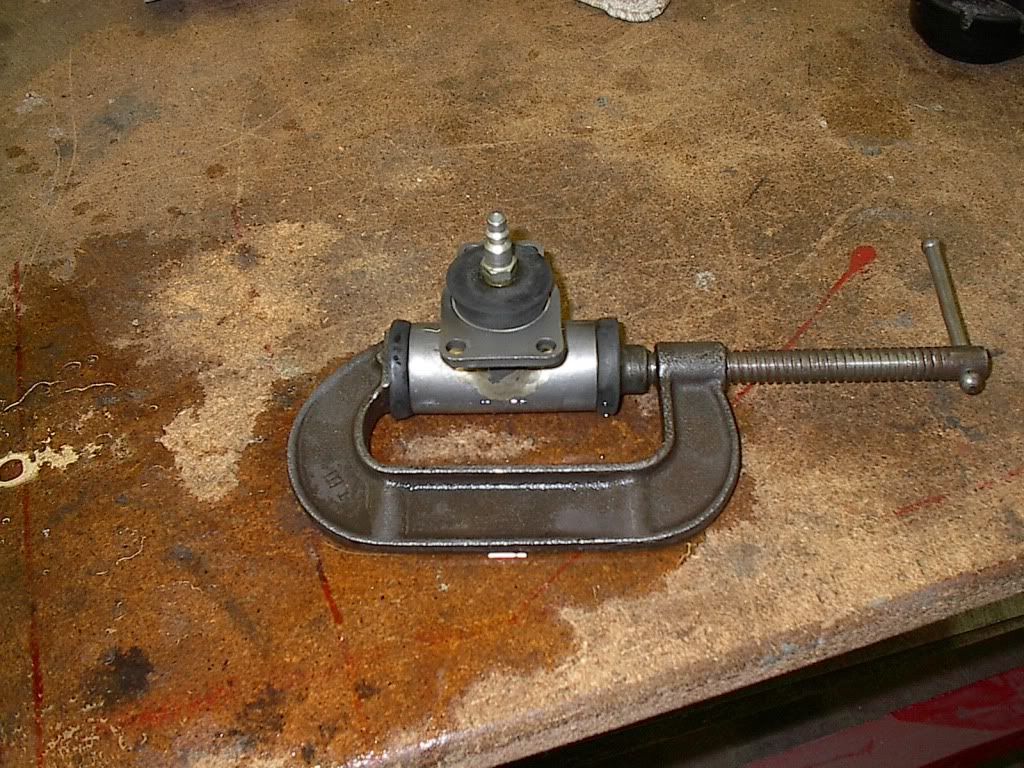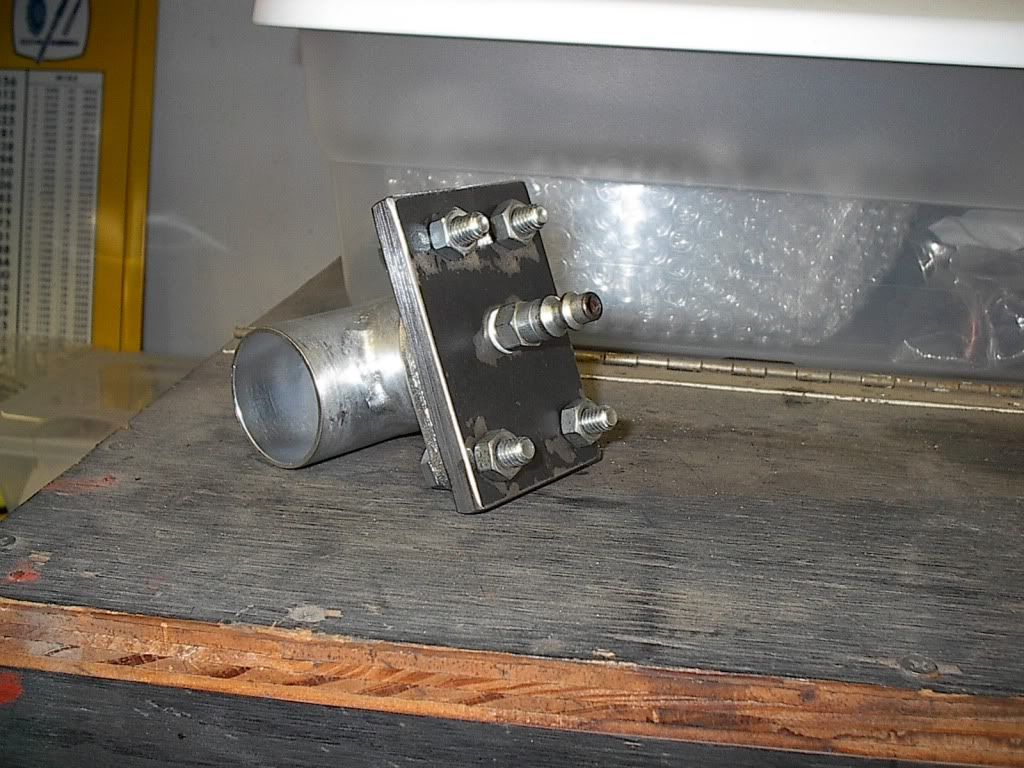I have been searching the threads for any info on a problem but no go so far. Has anyone heard of Fluid-Weld sealant failing? I recently replaced the intake nipples in a set of 1948 Panheads. The threads in both heads were good by visual inspection. New Colony inserts were dry fit and found to be good thread contact between heads and inserts. I wire brushed the threads in the heads, blew them out with compressed air, flushed them with carb cleaner aerosol, and blew them out again with compressed air. I installed both inserts with copious amounts of Fluid-Weld. I used a cam-style tool to tighten the inserts. Rivets were installed with shop-made device to keep inserts from flexing. I used a rubber stopper to force liquid sealant through the threads. I let everything dry for 24 hours. Pressure test on both installations showed no leaks. I installed the heads on motor and pressure tested the manifold connection---no leaks. The motor started with ease and idled down with carb adjustment. After about 100 miles of break-in, the motor became difficult to start and would not idle down. I started pressure testing from the manifold back and found the inserts and rivets to be leaking in both heads. If my prep work passes everyone's scrutiny, I can only assume the sealant failed to withstand the gas flow. I ask you all for input and help with this problem. Cold Yuenglings or your preferred brand will be gladly shared with any participants in this adventure!!!
Announcement
Collapse
No announcement yet.
Nipple Leaks Revisited?
Collapse
X
-
Motorpickle!
Did you blast the parkerizing from the new nipple?
Fluid-Weld's chemical action is defeated by any coating at all.
Please remember also that although a sealer may be beneficial, the actual sealing interface is not the threads. It is the back shoulder of the nipple butting up against the counterbore in the head (and the press-fit of the rivet). If these surfaces are blemished at all, then you are depending entirely upon the sealer instead of the original design.
Another question is: How severely did you have to tighten the nuts to seal the ferrules?
My track record with nipple replacements was not ideal either, but they stayed sealed once successful. Fluid-Weld may not be perfect, but digestibility from fuel was not a problem I encountered.
.....CottenLast edited by T. Cotten; 05-05-2010, 08:11 AM.AMCA #776
Dumpster Diver's Motto: Seek,... and Ye Shall Find!
-
I sure didn't want to hear this. I just performed the same proceedures on my '51 heads, with the exception that I haven't started the motor yet. Also, I used a bolt and safety wired nut in place of the rivet. I waited till the Fluid Weld turned purple on the insert and went clear on the aluminum before I assembled the inserts into the heads. You said you used carburetor cleaner to clean your parts. I wonder if that leaves a residue that is not compatible with the Fluid Weld. I used lacquer thinner and brake cleaner on my parts.Eric Smith
AMCA #886
Comment
-
I have tried fluid weld in the past and went back to JB weld, also you must bead blast both the head thread and insert and clean them with electric contact cleaner for a clean residue free surface. Use the smallest rivet possible even if you have to make one and use JB around it when installing, plus a good bucking tool. If you follow all of these steps you will have a leak free permanent repair.
Carl
Comment
-
Carl+Cotton+ all others
Thank you for the quick reply. It looks as though not blasting the nipple to bare metal may be the weak link in my repair job. I never would have considered this and may have redone the job with the same poor results. You both have saved me a lot of time and trouble. With all of the political BS spread all over this site, it is refreshing to get back to what this club is all about. Fixing broken bikes, a cold one now and again, ain't it great...........thanks again
Comment
-
Motorpickle!
Please remember that any sealer is just suspenders-and-a-belt anyway. And with this operation, we may need a mystical spell as well.
(Liberty stopped offering the service along with a moratorium upon any new motor or chassis accounts, a half-decade ago.)
I have evidence that Indian used an unidentified sealer, but none so far for H-D.
On to the notion of using a fragile and temporary gummy-worm 0-ring,..
Your instincts to remove it were quite accurate!
Carl's inserts are probably the best on the market at this time.
The chamfer on the ID is important.
The most digestive fuels are summer blends.
Every Memorial Day, I sample the local Shell gasahol premium and subject various paints, adhesives, and sealers to grasp the digestivity of the latest P4Gas.
Ironically, Shell's new 'nitrogenated' fuel was not as digestive as previous years, which would even swell and wrinkle powdercoating.
But for the first year ever, it loosened JB-Weld.
This year I shall add etched steel plates for substrates along with inert glass. ALOX-blasted sheets of steel shall be bonded together with either Seal-Lock or JB-Weld, and then submerged for observation over a long periond of time.
Then maybe, we won't be flatulating in total absence of light?
Who will volunteer to test other regional fuels in the same manner?
...CottenAMCA #776
Dumpster Diver's Motto: Seek,... and Ye Shall Find!
Comment
-
Hi All- I've got a set of '48 heads and I'll be converting them back to plumbers in the near future so I appreciate all of the above information. One question though....I've seen these leak tests mentioned a couple of times but I haven't seen the procedure. Usually I wait until the bike is fired up and then spray some WD40 around the vacuum connections to see if the idle revs or drops. It would be great to test them prior to assembling everything. What's the test that you guys are using?
Thanks,Scott
AMCA# 13993
Comment
-
Scott!
Unfortunately,
Spraying combustibles misses leaks, and the whole machine must be running as well.
A simple bubbletest eliminates lots of variables and saves a lot of do-overs:
http://virtualindian.org/11techleaktest.html
An ordinary large cork will work as well as a testplate, although it takes three hands.
A large cork or stopper is the only way an intake nipple can be tested separately.
The air supply must be constant: a hand pump won't cut it.
The tinest of leaks take a minute or two to show themselves as little blisters of foam.
No leak is acceptible.
Good luck!
....CottenAMCA #776
Dumpster Diver's Motto: Seek,... and Ye Shall Find!
Comment
-
A great place to get rubber stoppers of all sizes cheap is www.widgetco.com The stopper with the air fitting in the first photo was made to test gas tanks but seems to work well all over the bike.

 Last edited by Robert Luland; 05-06-2010, 03:21 PM.
Last edited by Robert Luland; 05-06-2010, 03:21 PM.
Comment

Comment